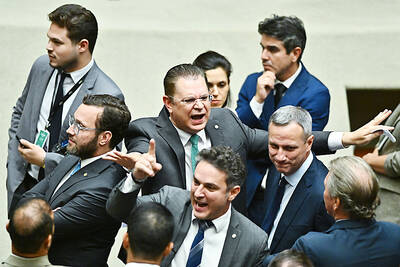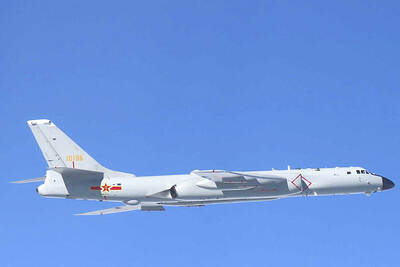Japan’s recent massive earthquake, one of the largest ever recorded, appears to have moved the island by about 2.4m, the US Geological Survey (USGS) said on Saturday.
“That’s a reasonable number,” USGS seismologist Paul Earle said. “Eight feet, that’s certainly going to be in the ballpark.”
Friday’s magnitude 8.9 quake unleashed a terrifying tsunami that engulfed towns and cities on Japan’s northeastern coast, -destroying everything in its path.
The quake and its tectonic shift resulted from “thrust faulting” along the boundary of the Pacific and North America plates, according to the USGS.
The Pacific plate pushes under a far western wedge of the North America plate at the rate of about 83mm per year, but a colossal earthquake can provide enough of a jolt to dramatically move the plates, with catastrophic consequences.
“With an earthquake this large, you can get these huge ground shifts,” Earle said. “On the actual fault you can get 20m of relative movement, on the two sides of the fault.”
He said similar movements would have been seen in recent earthquakes in Chile and Indonesia.
In December 2004, a magnitude 9.1 quake off Sumatra caused a tsunami that killed an estimated 228,000 people. An 8.8 quake off the coast of Chile in February last year killed more than 500.
There was not a similar ground shift in the magnitude 7.0 earthquake that devastated Haiti in February last year, Earle said.
“A magnitude 7.0 is much smaller than the earthquake that just happened in Japan,” he said. “We’ve had aftershocks [in Japan] larger than the Haiti earthquake.”
Kenneth Hudnut, a USGS geophysicist, said experts read data, including from global positioning systems, to determine the extent of the shift.
“We know that one GPS station moved [2.4m] and we have seen a map from GSI (Geospatial Information Authority) in Japan showing the pattern of shift over a large area is consistent with about that much shift of the land mass,” he told CNN.

PARLIAMENT CHAOS: Police forcibly removed Brazilian Deputy Glauber Braga after he called the legislation part of a ‘coup offensive’ and occupied the speaker’s chair Brazil’s lower house of Congress early yesterday approved a bill that could slash former Brazilian president Jair Bolsonaro’s prison sentence for plotting a coup, after efforts by a lawmaker to disrupt the proceedings sparked chaos in parliament. Bolsonaro has been serving a 27-year term since last month after his conviction for a scheme to stop Brazilian President Luiz Inacio Lula da Silva from taking office after the 2022 election. Lawmakers had been discussing a bill that would significantly reduce sentences for several crimes, including attempting a coup d’etat — opening up the prospect that Bolsonaro, 70, could have his sentence cut to

China yesterday held a low-key memorial ceremony for the 1937 Nanjing Massacre, with Chinese President Xi Jinping (習近平) not attending, despite a diplomatic crisis between Beijing and Tokyo over Taiwan. Beijing has raged at Tokyo since Japanese Prime Minister Sanae Takaichi last month said that a hypothetical Chinese attack on Taiwan could trigger a military response from Japan. China and Japan have long sparred over their painful history. China consistently reminds its people of the 1937 Nanjing Massacre, in which it says Japanese troops killed 300,000 people in what was then its capital. A post-World War II Allied tribunal put the death toll

A passerby could hear the cacophony from miles away in the Argentine capital, the unmistakable sound of 2,397 dogs barking — and breaking the unofficial world record for the largest-ever gathering of golden retrievers. Excitement pulsed through Bosques de Palermo, a sprawling park in Buenos Aires, as golden retriever-owners from all over Argentina transformed the park’s grassy expanse into a sea of bright yellow fur. Dog owners of all ages, their clothes covered in dog hair and stained with slobber, plopped down on picnic blankets with their beloved goldens to take in the surreal sight of so many other, exceptionally similar-looking ones.

‘UNWAVERING ALLIANCE’: The US Department of State said that China’s actions during military drills with Russia were not conducive to regional peace and stability The US on Tuesday criticized China over alleged radar deployments against Japanese military aircraft during a training exercise last week, while Tokyo and Seoul yesterday scrambled jets after Chinese and Russian military aircraft conducted joint patrols near the two countries. The incidents came after Japanese Prime Minister Sanae Takaichi triggered a dispute with Beijing last month with her remarks on how Tokyo might react to a hypothetical Chinese attack on Taiwan. “China’s actions are not conducive to regional peace and stability,” a US Department of State spokesperson said late on Tuesday, referring to the radar incident. “The US-Japan alliance is stronger and more